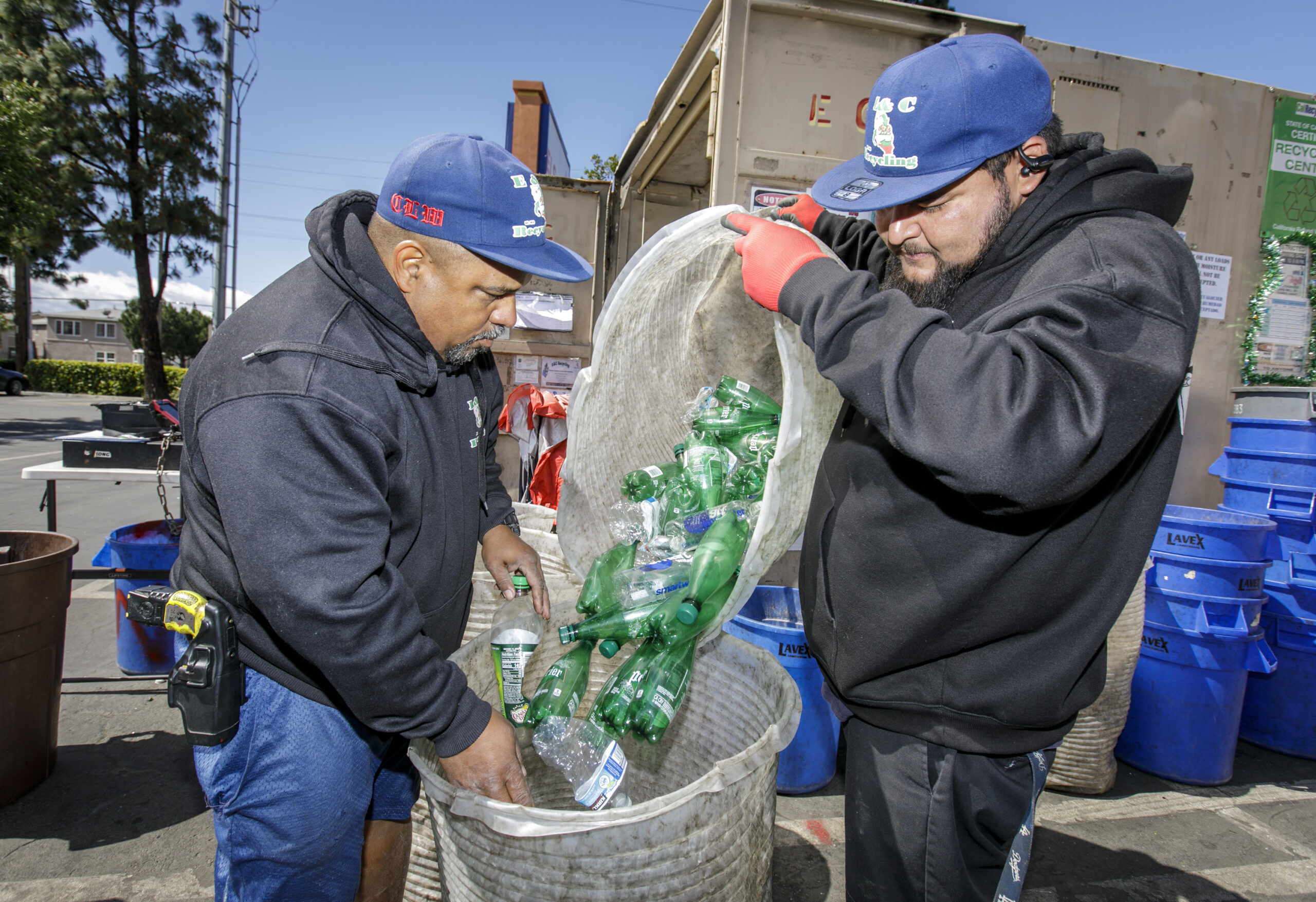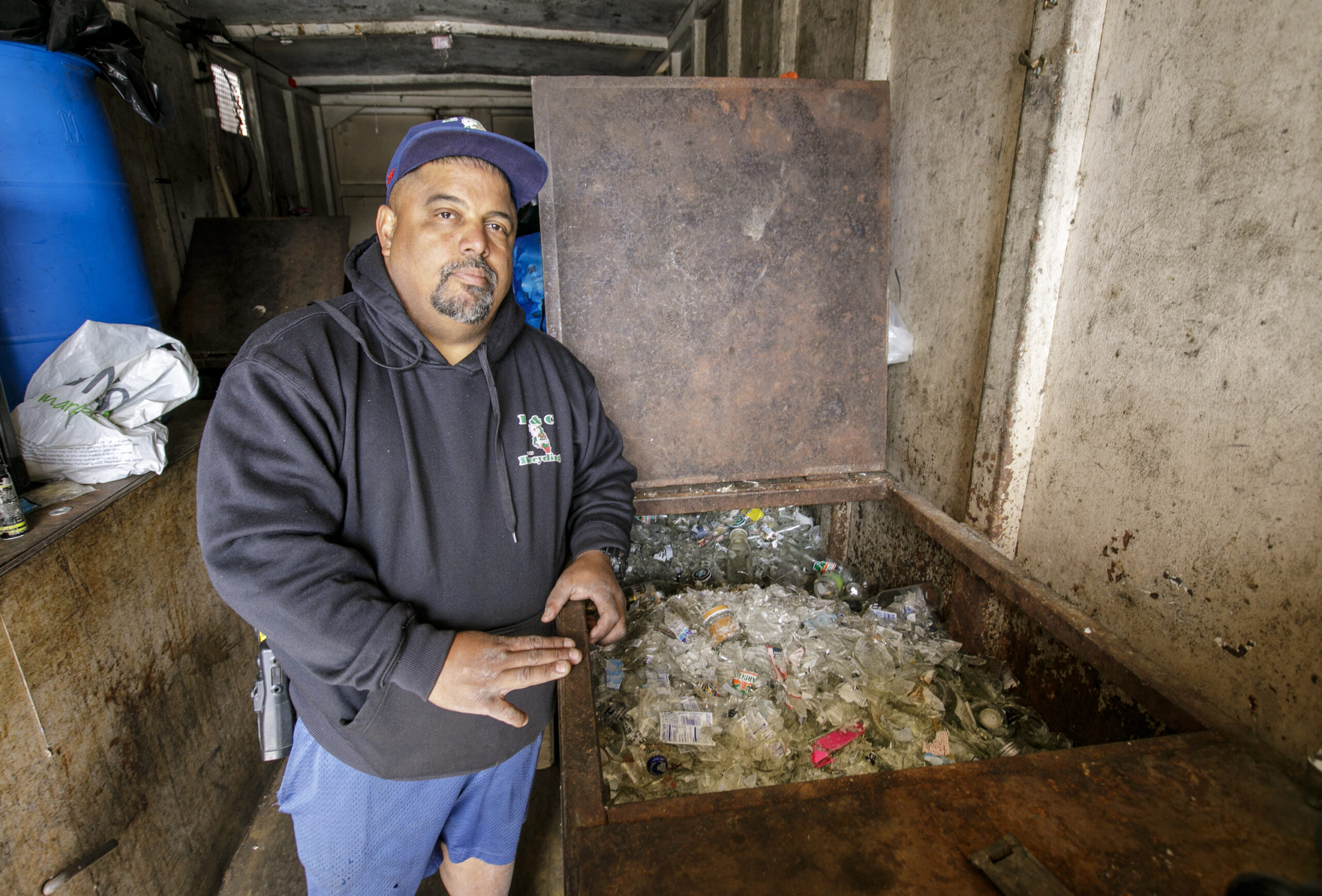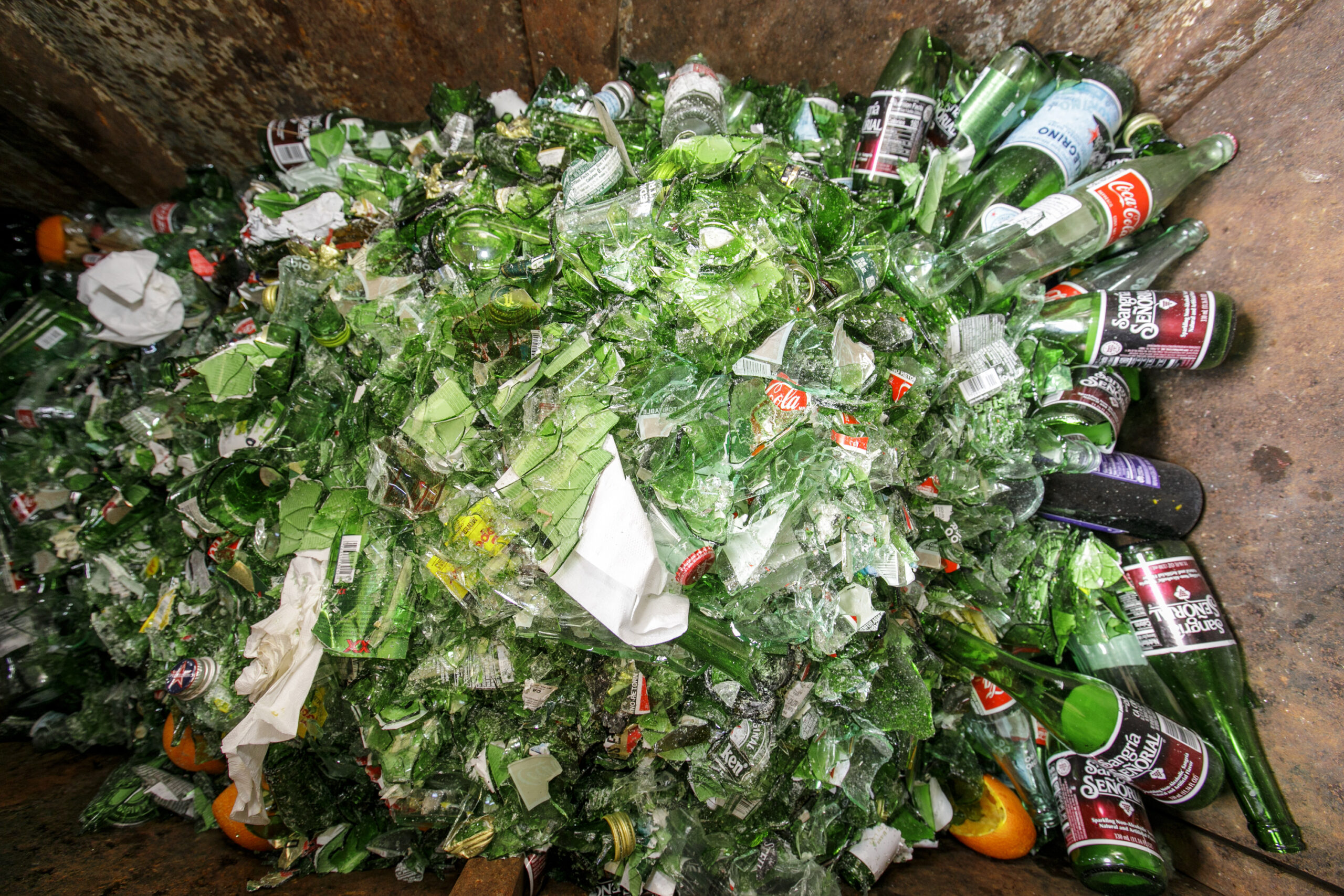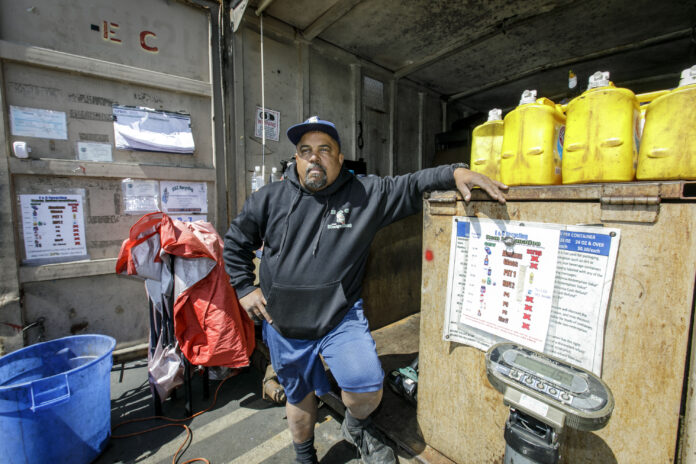Since last year, recycling redemption center operators have contended with falling prices of certain scrap plastics.
Market fluctuation is a normal part of the recycling business and the state’s recycling program is designed to help those companies pay the difference between their expenses and the low return they sometimes get on the material. Recyclers say it’s essentially the only thing keeping their segment of the industry viable.
However, through what advocates call a bureaucratic flaw, redemption center operators have for years had to contend with payments that are sometimes wildly out of step with the contemporary price of that plastic.
“The prices go up and down. It’s like a rollercoaster,” said Curtis Winston, who owns E & C Recycling in Arleta. “There needs to be amendments to where it can address processing payments or any other emergency needs right away. It needs to include input from recycling centers because they each have individual needs for their area.”
A discretionary adjustment to those payments began on April 1, and while it represents a large step in the right direction, it still does not make up for prior losses from the program. Meanwhile, a bill proposed in the California Senate calls for tweaks to the calculation method of these payments that would rely on fresher prices from the scrap market.
“The formula is meant to pay the redemption centers for the work that they do,” said Susan Collins, president of the Container Recycling Institute, which is based in Culver City. “Everything sounds good so far, but what they do to figure out what scrap prices are is use old data.”
Making money

Recycling redemption centers have three principal revenue streams — California Refund Value, the value of the scrap itself, and what’s called a processing payment.
The California Refund Value, or CRV, is the 5- or 10-cent deposit on aluminum, glass and plastic bottles that consumers get back when returning their bottles — a pass-through fund for redemption centers. The true revenue for redemption centers is when they sell the scrap material to processing centers, who pay both the market price for the scrap and a processing fee for handling and transporting the material plus a small profit. That fee is designed to offset gaps between what the business spends and what the processing center pays for the scrap.
The state Department of Resources Recycling and Recovery, or CalRecycle, sets the processing payment per ton every Jan. 1, based on the most recent four-quarter average of scrap prices available — the prior Oct. 1-Sept. 30 year.
“They’re using a little bit older than last year’s data to make payments now to redemption centers, and prices do not remain stagnant,” Collins said.
CalRecycle does have the discretionary power to adjust those payments quarterly, and in fact it did so beginning this month. The adjustment can be done if the prior January-December average price is more than 5% different from the initial October-September calculation.
The continued use of a 12-month window leaves the processing payment for a volatilely priced material called PET plastic, or polyethylene terephthalate plastic, often used in water and soda bottles, vulnerable to being off-mark.
“When you’re dealing with money and a market like mine that fluctuates big time, you can’t really use an annual formula, or even a three-month formula,” Winston said. “When the scrap value prices go down, they’ve got to be able to look at it and say ‘We’ve got to get these guys whole again’ and do it immediately.
“That three months can cause a lot of devastation for recycling centers,” he added.
Material change

This issue became magnified over the years as bottled water and soda became popular enough to overtake the consistently valuable aluminum as the primary redeemed material.
“It’s just kept growing and growing in popularity, which means that the economics of the redemption centers are dominated by PET,” Collins said. “With aluminum being a smaller percentage of their overall materials, they’re really vulnerable to economic changes with PET plastic recycling.”
The scrap value for a ton of PET plastic calculated at the start of the year was about $470, which generated a processing payment about $85 a ton. However, high prices at the start of last year heavily skewed that calculation because there was a steep drop in prices, and scrap was selling for much less than $470 per ton in January.
When the latest 12-month data were considered, it resulted in an 18% drop in average price from the start of the year, to about $384 a ton. This makes the new processing payment about $171 a ton.
The change was large enough to address the gap now — in fact, a calculation by the independent Plastics Recycling Corporation of California has PET scrap selling at $395 per ton in the last month. But even the periods when processing payments more than make up for the revenue gaps don’t make up for when they fall short, Collins argued.
“They were overpaid last year, which still doesn’t make up for the years and years of underpayments,” she said. “It doesn’t make up for the fact that the underpayments were so bad that many small business owners went out of business through no fault of their own.”
The state has lost more than 500 redemption centers since 2016, and now has fewer than 1,300. Winston said he was planning to open two more centers in the county, but has shelved those plans, laid off an employee and cut the other’s benefits.
With just one worker, Winston said he has little choice but to drive up to Arleta to help out.
“I was hoping to open up two more closer to my house in Long Beach, but I can’t do that now,” Winston said. “You can’t just walk away and leave one employee running a recycling center by himself.”
Looking forward

Senate Bill 353, proposed by Napa Democrat Bill Dodd, would significantly narrow the calculation window of processing payments to the most recently available quarter. CalRecycle would also be able to adjust payments similarly, so an adjustment beginning April 1 would use the prices from October-December.
The bill would also make the plastic containers 46 ounces or larger containing 100% fruit juice part of the CRV program.
Advocacy groups like the Container Recycling Institute welcome the proposed changes, and have pushed them for years.
“It would bring the prices closer to today and make it more accurate so the centers wouldn’t swing back through these experiences of being wildly over- or under-paid,” Collins said.
Though he stressed that reform to the formula was vital, Winston said he was suspicious of the bill as written because he did not think its proposed window would move the needle far enough.
“It should not be a three-month thing, because the scrap prices change every three or four days,” he said. “A monthly adjustment would be fine.”
